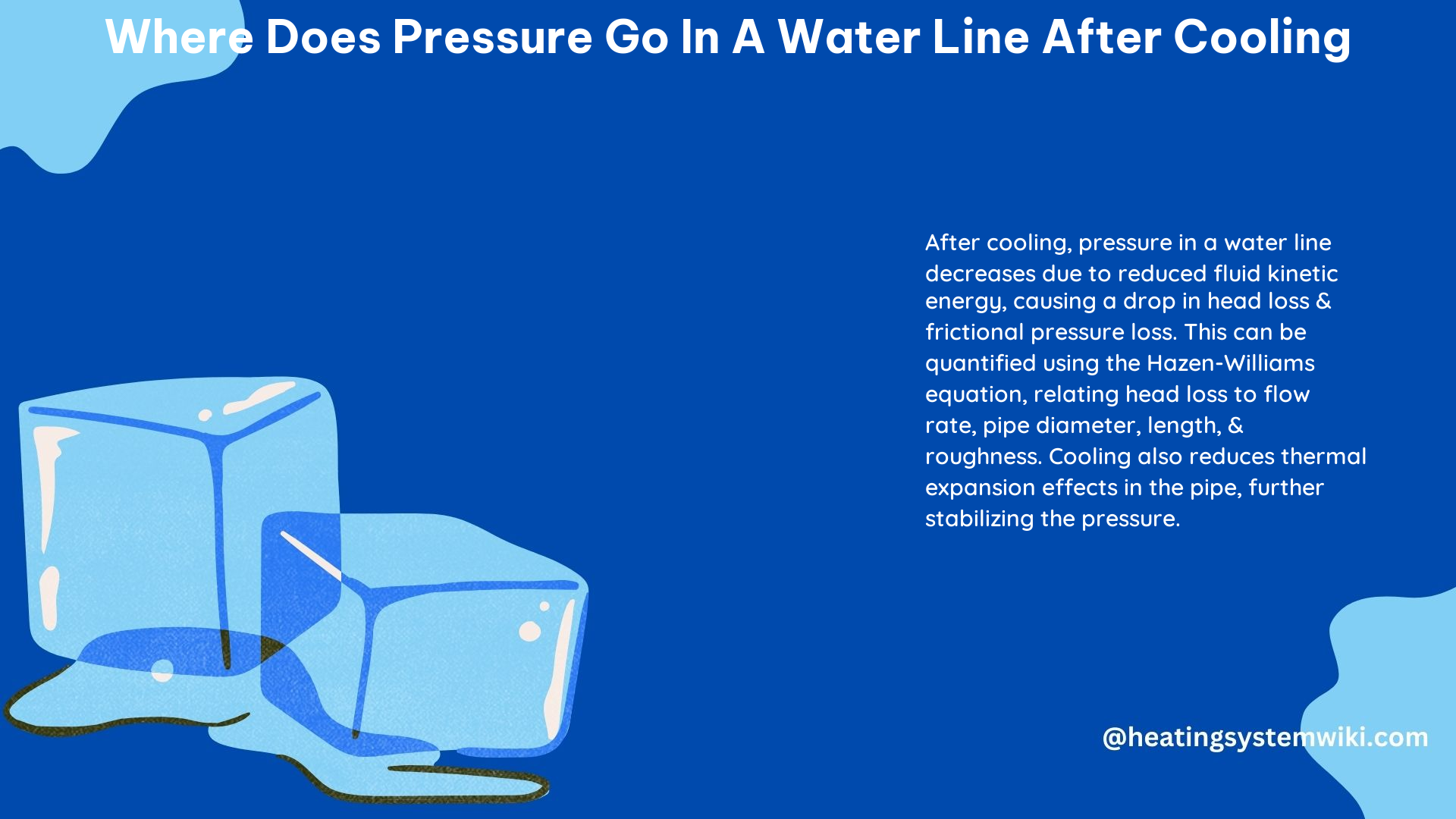When water cools, it contracts, which can lead to a decrease in pressure in a water line. However, other factors can also affect the pressure in a water line after cooling, such as the presence of check valves, pressure reducing valves (PRV), and the addition of a pressure tank. Understanding these factors is crucial for maintaining the pressure within the recommended range and preventing damage to equipment.
The Effect of Check Valves and Pressure Reducing Valves (PRV)
If the water line has check valves or pressure reducing valves (PRV), the pressure can increase due to the expansion of water as it is heated. This can cause problems, such as the breaking of water filters or other equipment.
- Check valves are one-way valves that allow water to flow in only one direction, preventing backflow. When water cools and contracts, the check valve can prevent the water from flowing back, leading to an increase in pressure.
- Pressure reducing valves (PRV) are used to lower the water pressure in a system. When water expands due to heating, the PRV may not be able to compensate, resulting in a pressure increase.
The recommended range for water pressure is typically between 60-70 PSI (pounds per square inch). If the pressure exceeds this range, it can cause damage to various components in the water system.
Preventing Pressure Buildup with a Pressure Tank

To prevent the issue of pressure buildup due to water expansion, a small pressure tank can be added to the cold water inlet. The pressure tank provides an air space for the expanding water to go into, reducing the pressure buildup.
- The pressure tank should be sized appropriately based on the volume of the water system and the expected expansion of the water.
- A typical residential pressure tank has a volume of 2-5 gallons and can accommodate the expansion of water in a small to medium-sized water system.
- The pressure tank should be pre-charged with air at a pressure slightly lower than the desired system pressure, typically around 40-50 PSI.
Monitoring and Adjusting Water Pressure
In addition to installing a pressure tank, regularly checking the water pressure with a pressure gauge and adjusting the PRV can also help maintain the pressure within the recommended range.
- A pressure gauge should be installed at a convenient location in the water system, such as near the main water shut-off valve or the pressure tank.
- If the pressure is found to be outside the recommended range, the PRV can be adjusted to increase or decrease the pressure as needed.
- It’s important to follow the manufacturer’s instructions when adjusting the PRV to ensure the pressure is set correctly.
Other Factors Affecting Water Pressure
The pressure in a water line can also be affected by the flow rate, pipe diameter, and the number and type of fittings in the line.
- Sudden turns, expansions, or contractions in the pipe can create additional turbulence, leading to an additional loss of pressure. This is known as “minor losses” and can be estimated using the Hazen-Williams equation.
- The Hazen-Williams equation is a widely used formula to estimate the energy losses in pipes carrying water, taking into account the pipe diameter, flow rate, and the roughness of the pipe material.
- The equation is:
hf = 10.67 × (Q^1.85) / (C^1.85 × D^4.87), wherehfis the head loss (in feet),Qis the flow rate (in gallons per minute),Cis the Hazen-Williams roughness coefficient, andDis the pipe diameter (in inches). - The height of the pipe can also affect the pressure, as the pressure will increase by approximately 0.433 PSI for every foot of vertical rise in the pipe.
Pressure in Cooling Water Return Pipes
When it comes to cooling water return pipes, the pressure is typically routed back to the cooling tower return line at a level above the cooling tower.
- The pressure in these pipes can be affected by the height of the pipe, the flow rate, and the number and type of fittings in the line.
- Proper design and sizing of the cooling water return pipes are crucial to maintain the desired pressure and flow rate.
- The use of pressure gauges and flow meters can help monitor and adjust the pressure and flow in the cooling water return system.
In summary, the pressure in a water line after cooling can be affected by various factors, including the presence of check valves or PRV, the addition of a pressure tank, the flow rate, pipe diameter, and the number and type of fittings in the line. Understanding these factors and taking appropriate measures can help maintain the pressure within the recommended range and prevent damage to equipment.
References:
– Why would the pressure in the cold water lines increase whenever the hot water heater is turned on?
– Flow and Pressure in Pipes Explained
– Pressure in Liquid Lines
– Pressure in Liquid Lines
– High pressure on liquid side
